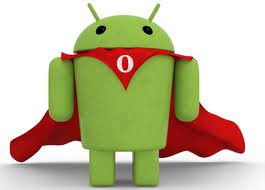| It's BACK! |
|
There is a learning curve to creating applications for the android phone. It is suggested by Mark Friedman that one first starts with App Inventor, the Gui interface. If one knows some JAVA then one can use move onto the Bridge, which allows one to use Java and app inventor components. And lastly use Android more advanced framework for developing more advanced topics.
Resource Links:
App Inventor in Education - this is a google group of educators who are using App Inventor in their classrooms or programs to share ideas and teaching resources.
App Inventor API - blog about App Inventor.
App Inventor for Android site - this site was developed by Professor David Wolber of the University of San Francisco. It creates tutorials and videos about working with App inventor.
Android Developer Site - The Android STK download, videos and tools, sample code, and docs you need to create great apps.
App Inventor Toolkit application download - Google’s App, created by MIT labs, lets people with no previous programming experience build applications for mobile phones.
Resource Bridge Links:
Bridge Code
- The App Inventor Java Bridge helps one make a move from App Inventor to more complex code development.
Books related to mobile technology development
Link to Amazon - App Inventor: Create Your Own Android Apps by David Wolber et al. - c2011
| [review in process] |
Link to Amazon - Practical Android Project by Jordan & Greyling - c2011
This book delves into the programming aspects of Android mobile technology. It explains the basic development platform requirements and usage needed and how to do the installations of tools such as:
|
The book covers architecture such as the platform stack, working with IDEs such as Eclipse or NetBeans. Note: NetBeans has more student friendly and easy to use qualities for getting started with Java and Android development (p33).
Java is essential to learning Android development and it seems some level of Java programming will be needed in order to make full use of the materials in this book. Also skills building and running the IDE and the Android emulator are assumed.
This book also covers the use of cocoa.basic and a CocoaDroid Project with sample scripts, the use of embedding Lua scripting language (which is written in Java - the Kahula2 implementation version), used for custom scripts and prototyping. Also covered is the SL4A (also known as ASE - Android Scripting Environment) scripting layer for Android used to run your own scripts written in high level languages (p193).
In addition HTML / Javascript and Air are discussed for the creation of GUIs dealing with graphics and animation. Also REST with the Facebook and Twitter APIs and the use of the Google App engine, Game development graphics and animation, along with an explanation of the Drawable Class which is used to facilitate the rendering of content (p.328).
And lastly the book covers the installation, usage and limitations of the API Inventor tool, which allows inexperienced users to to drag and drop components without having to know any code (p.361).


No comments:
Post a Comment